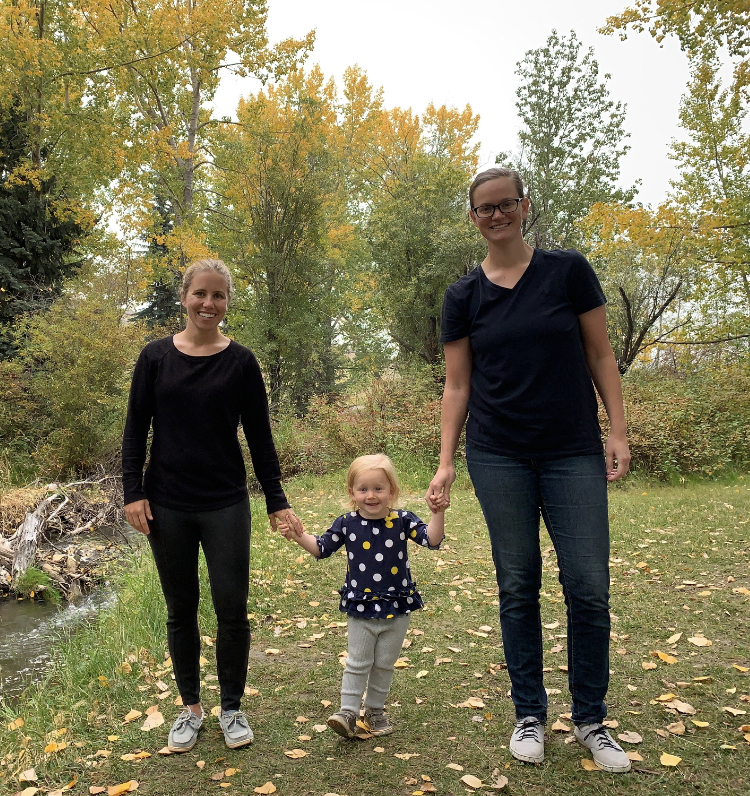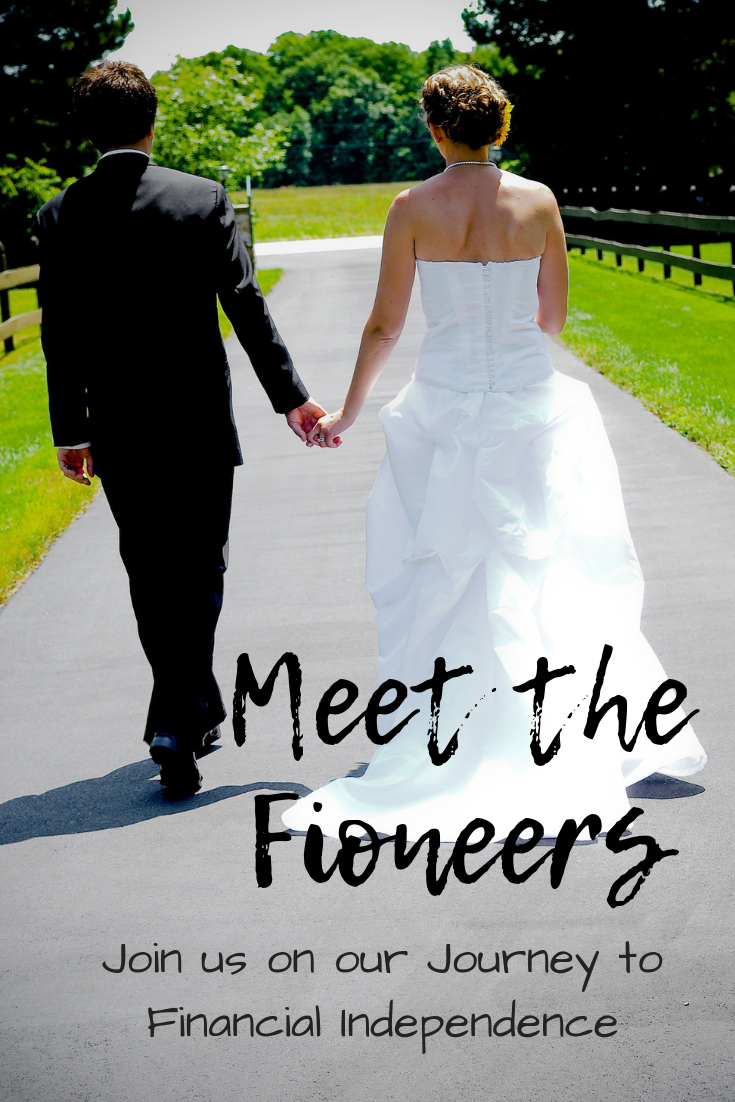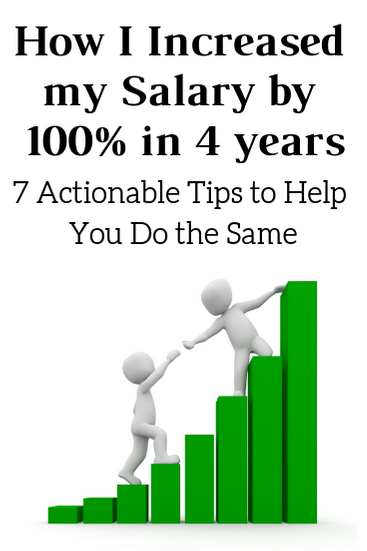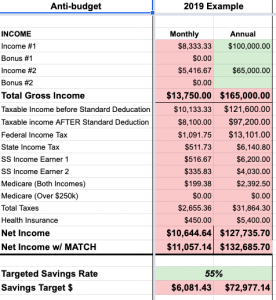
The traditional FIRE narrative encourages people to save as much as they can to retire as early as possible. People work stressful full-time jobs until they reach their magic number, and then they retire early to what they think will be a life of absolute freedom and bliss.
I sometimes still even get caught up in this way of thinking.
A few weeks ago when we were updating our FI plan, I realized that we could reach full FI in 7 years. When I realized that, a small part of me thought, “We should just keep pushing. Our life is pretty great right now. We could just keep this up for another 7 years and we’d have full freedom.”
I know that I’m extremely vocal about designing our lives along the way to FI, so this feeling surprised me.
It was really tempting to give up on doing the hard work of designing our lives now, along the way to FI.
The other (bigger) part of me talked me off that ledge. If my ideal life involves generating income doing things I enjoy, why would I wait 7 more years to build the life I want.
The purpose of saving and investing isn’t to retire early; it’s to design a life you love as you build more financial freedom.
If I’m designing a life I love, it doesn’t matter if I can retire by 40, 45, or 50.
For people pursuing financial freedom, reaching full FI is such a temptation (even for myself at moments). This is why I’m always interested in hearing the stories of people who are choosing to downshift along the way to FI. I’m especially inspired by stories of people who are very close to achieving full FI and decide to slow down.
This is why I’m so excited to share the story of Court, who writes at Modern FImily. Court and her family were less than 1 year from reaching full FI when she decided to downshift and take a part-time job.
Most people in her situation would just have pushed through, so I was excited to learn about her decision-making process!
Let’s get into the interview.
1. Tell me a little bit about you.
I’m Court, and I’m 1/3 of the Modern FImily. My wife, Nic, and I have a 2-year-old daughter, Finn. We chronicle our journey on our blog, Modern FImily. I’m originally from Florida, and we now live in Canada which is where Nic was born and raised.
As a family of three, we reached financial independence in 2018 at the ages of 32, 30, and 1. We are hopeful to become a family of 4 in the near future, so we are now saving with a higher number in mind.
We embrace the values of frugality, minimalism, and mindfulness. We love spending time together as a family, especially outside in nature. Because of these things, we only spend about $25,000 CAD annually. We are extremely fortunate and grateful to have figured out early on that a happy life does not have to be an expensive life.
We went from a combined negative $110,000 of student loan debt to millionaires within 9 years which does not sound very Slow FI.
Yet along this journey of aggressive debt payoff and savings, we never felt deprived. We both did shift work for the majority of our careers which allowed for a great work-life balance and provided ample travel experiences.
We never felt the urge to climb the corporate ladder. Instead, we prioritized enjoying our life outside work.

The Slow FI aspect of our story kicked in after our daughter was born in 2018. Nic retired early in 2018 when our daughter was born, and I now work part-time doing shift work.
Rather than rush to the finish line, we decided to drop our income significantly as we slowly transition to early retirement.
2. I’d love to hear more about your decision to pursue part-time work, even though you were very close to reaching FI. Can you tell us more about your motivation for this?
Switching to part-time work was a VERY hard decision for me. Looking back, I don’t know why I teetered so much. Switching to part-time work was the best decision for our family, hands down.
Let me share a little bit more context. In early 2019, I was working in a travel intensive role. I had been in that role for 2 years, and it just kept getting busier and busier with more travel. My schedule was always up in the air. Sometimes, I’d book a flight on Friday afternoon for the following Monday.
At this time, we also had a 1-year-old at home. My wife felt like she was single parenting for the majority of the time. This was never our intention.
The main benefit of my job was that I was able to work from home when I wasn’t traveling. However, I was traveling more and more, so my days home were limited. For some reason, I was hesitant to give up the work from home “perk” even though the travel days were weighing on me.
I’m a real numbers nerd, so I knew that we were so close to our FI number for a family of 4. All I needed to do was to keep chugging along for another 10 months. Then, we’d reach our “magical” number.
As the travel expectations continued to ramp up, Nic brought up the idea of working part-time. At my former company, there was an opportunity to switch to part-time shift work.
On paper, this looked like I’d be taking a 50% pay cut. Yet, when I did the math, I realized that the true hourly rate would actually be $10/hour more. My true hourly rate calculation took into account being in a lower marginal tax bracket and receiving a larger annual Canada Child Benefit from the Government since our income would go down.
This decision made complete sense.
However, it took me a total of FIVE MONTHS to finally make this decision. When I was traveling, I was ready to make the change. When I was working from home, I justified that it wasn’t so bad.
The last straw was when I had to bring my laptop so that I could work on vacation at Nic’s family cabin. There was very little service, and I was outside walking down a street to try to find service, so I could send out an email. I realized that I had enough. I wanted the work-life balance back that the part-time shift-work would provide.
One great thing about shift work is that it allows for a lot of time off. However, the downside is that it requires me to work from 6 pm to 6 am. When I did that previously as a full-time employee, it was challenging. I wasn’t sure my body could handle it again.
I finally decided to take the part-time role. The transition has been much easier than anticipated. I now work two 12-hour night shifts (6 pm to 6 am), and then I have 8 days off. This means I only work 73 days/year. I have 292 days off!
While this might not work for everyone, this has provided me with an amazing work-life balance and plenty of time in between shifts to rest and recuperate.
Now that it’s been almost a year since I made the switch, I can truly say that this was the right decision. This feels like a wonderful way to transition to early retirement. To be honest, I already feel retired, and we’ve been able to maintain a 50% savings rate.
Surprisingly, we reached our family-of-four-FI-number earlier than we expected. We love our lifestyle so much that we are now discussing me continuing this for longer than we originally planned. The income is adding an extra buffer.
3. How has this decision to work part-time and ease into early retirement impacted your quality of life?
We now spend SO MANY stress-free hours together as a family. We live a very slow-paced intentional life.
We have time to appreciate the little things. This is great because our daughter stops to look at everything when we go on walks! This means outings sometimes take 4 times as long, but we can enjoy it together.

We want her to be able to explore and imagine without feeling rushed. We want her to have relaxing meals rather than feel like we need to run out the door to activity #28 for the day. We want to be able to lay outside on the grass and cloud gaze together.
We both want to be there for her rather than sending her to daycare. We are typically the only family at any (pre-COVID) kid classes/activities that have both parents present. We want to play with her and see her grow up.
We are trying to show her that a simple life can be a happy and fulfilling life. We want her to know that family, relationships, and community are the most important things in life.
Thanks to the switch, we have also been able to spend over 60 days at Nic’s family cabin this summer (completely void of work laptops!). I have been able to read over 40 books so far in 2020. Nic has been able to build furniture for our house.
We feel fortunate that we do not have to cram in activities and chores into the weekend. Instead, we’re able to head out to the Canadian Rockies on a Tuesday at 9:00 am for a hike or go grocery shopping on a Thursday at 2:00 pm to avoid crowds.
4. How did your decision to work in retirement impact your financial goals or timelines?
We originally anticipated that we would reach our FIRE number for a family of 4 in March or April of 2020. This would have required me to remain in my full-time role until then.
We estimated that taking a 50% pay cut would stretch out the time horizon to March or April of 2021.
Because of the market, we actually reached our full FIRE number in July of 2020, which was much earlier than anticipated. Even after taking a 50% pay cut, we reached our full FIRE number only 4 months later than if I had continued with full-time work.
Even though we’ve reached FI, I don’t feel pressure to quit my job. Life is great with our current set-up. I enjoy my job. I enjoy the schedule. The income will go towards more giving, longer vacations, and an added buffer.
We have no problem keeping things as is until hopeful baby 2 arrives at some point in 2021. We can then reassess the plan.
Because we now have more time allotted towards the things we actually value, we are much less stressed.
We’ve found that when we are less stressed, we are less likely to spend money. We don’t feel the need to spend on retail therapy. We have time to cook our own meals, which tend to be cheaper and healthier than eating out. We don’t feel like we need to take a luxury vacation. Our low-stress lifestyle does not create the urge to escape from anything.
Many people cannot fathom how a family of 3 could live on $25,000 a year but it’s actually quite easy to do when you remove all the stress spending in your life.
5. What enabled you to make the decision to scale down work?
Honestly, I don’t think I would have been able to make this decision myself.
My wife, Nic, was definitely the driving force behind the decision. She’s the one who focuses on the lifestyle we are trying to create whereas I am more focused on the numbers. It’s a good balance as I am the Type-A planner, and she adds in a ton of flexibility to my wild thoughts and plans.
Even though I constantly complained about all the travel from my previous job, I still found ways to justify staying there. Nic reminded me that if I quit right then and there, we’d be more than fine. We likely wouldn’t have to work again. If we did, it could wait until our kid(s) were older and in school.
We also recognize that we are motivated and driven individuals (most people who pursue FIRE are), so the likelihood of doing absolutely nothing that generated any income would be slim.
Having various conversations like this helped my “one more year” syndrome tremendously.
Ultimately, we want to be around for our kid(s), particularly before they enter school. These formative developmental years are so important, and we are so grateful to be fully present as a young family.
On the financial side, we’ve been able to do this because we’ve saved and invested a significant portion of our income up to this point. Since we’ve invested our portfolio in the stock market, the compounding is allowing our investments to increase even now that we are saving less.
Because we already focus on values-based spending, we didn’t really need to go over spending to see if we could make this work. To maximize our spending, we focus on optimizing the largest expenses in our lives (housing, transportation, and food).
For example, a big part of the reason why we are able to spend so little is that:
- We paid off our mortgage early by having multiple roommates in our 20s.
- We drive used, reliable vehicles that we paid for upfront with cash.
- We cook our meals at home and view meals out as a treat for special occasions.
- We like to DIY things instead of outsourcing it.
- We love spending time outdoors. It’s relaxing, enjoyable, and FREE.

We aren’t the kind of people who are worried about spending a few dollars on a latte, as long as it’s a treat we do occasionally. Over the years, we’ve focused on intentional spending and cutting out the fluff. Because we do spend money on things we value, we buy annual passes to the zoo, national parks, and a sports center. We get a lot of enjoyment from these and an annual pass helps us get the most bang for our buck.
Because we track our expenses and already know exactly how much we spend, we knew that we could still have some money left over to save, even on a single part-time salary.
6. Why and when do you think someone might consider “downshifting?”
There is no point rushing to the FI finish line if there is a more enjoyable route we could take. The journey to FI is part of the experience.
If you feel like your life is a constant grind to reach your long-awaited FI number, you are doing it wrong.
If you are at a point where you have some F-You Money (1-2 years of living expenses, in my opinion), you are in an excellent position to make a move.
Even if you don’t have this amount of F-You Money and your work is unbearable, it’s time to reassess and look for a change. The change could be shifting to another full-time role that offers more flexibility or deciding to go back to school.
Conversely, if you are enjoying your life, there’s no need to downshift immediately.
7. How did your pursuit of FI help or hinder your decision to do part time work in retirement?
Our pursuit of FI helped us to be able to make this decision. Because of financial independence, we were able to build the mindset and habits needed to downshift. In order to have money to save and invest, we’ve been tracking our expenses each month since 2009. This has allowed us to confidently make the transition to a lower income and know we’ll still be fine.
Because of financial independence, we had focused on increasing our income over time and have a hefty amount of savings in place. Without that, I wouldn’t have felt confident enough to walk away from a full-time job.
FI also helps us think through the concept of “enough” and what we truly value. When we reached the point where we felt like we had enough, we realized that we could turn our focus to things that are more important than money. Money helps facilitate these things, but we’ve learned that what we really want is to make a positive impact in the world, to help others, to have more time with those we love, and be kind. Enough means we are able to focus our time on what matters most.
8. What advice do you have for someone considering a similar decision?
If you’d like to downshift, one of the first things you need to do is get your finances in order.
Take time figuring out what you truly value. Make a list of the top 10 things you do each week that add the most value and joy to your life. If you have a partner, it’s helpful to do this activity with them.
Then, try to focus your time, energy, and money on those things. Once you do that, you’ll likely notice that those things don’t cost a lot of money.
This allows you to recognize the fluff in your life and eliminate it. Continue to spend money on what genuinely makes you happy – not what society tells you will make you happy.
Once you start doing this, your spending will slowly drop over time.
Once your spending drops, you’ll realize that you don’t need to work as long or hard to cover your lifestyle or maintain the same savings rate.
This paired with meticulous expense tracking will allow you to make a calculated decision about reducing expenses.
Second, it’s important to be uniquely you. Figure out who you are. Be true to yourself, take risks, don’t follow the herd, and live your life in unconventional ways, if you want to.
As a parent, I’ve learned that it’s extremely valuable to have time for free exploration and creativity. This isn’t just for kids though; adults too. Instead of putting pressure on yourself and those around you to succeed, we need to encourage free-thinking, entrepreneurship, and breaking the mold. Having a less hectic lifestyle enables more freedom and creativity.
Finally, remember to enjoy the journey. There’s no point in rushing to achieve financial independence if you are jeopardizing your mental or physical health along the way.
Thank you, Court, for sharing your story with us! There are so many things I love about this interview.
I absolutely love that Court decided to scale back to part-time work when she was only 10 months away from reaching full FI.
One thing I find very interested in that people think that they need to reach full financial independence in order to enjoy their life. I easily can understand this perspective when it’s coming from a place of burnout and exhaustion. When I was burned out, I couldn’t imagine enjoying work.
Now that I work part-time, I’ve realized that I can have the best of both worlds. Part-time work provides so much freedom and flexibility. By working free hours, we can get so many of the benefits of early retirement without waiting to retire.
It also provides external structure and income to make the transition easier. Instead of going from having fully structured days to no structure, it allows us to build up our own structure as we scale down work. Incremental changes allow us to get used to a change gradually rather than having it shock our system.
Another thing that I loved about this interview is the discussion of values-based spending.
It reminds me of the virtuous cycle that I shared in my recent post on curbing emotional spending. When we can focus on spending money on things that we value (and eliminating the fluff), it can allow us to work less because we don’t need as high of an income to cover our expenses and save. When we work less, we have less stress and find ourselves spending less on groceries, restaurants, and travel. This is a virtuous cycle that continues as you design your life and define your values.
The final thing that I loved about this interview was the emphasis on “slow living.” I love the idea that having more time for relaxation, fun, and free exploration can allow us to be more creative. It’s hard to discover who we are and what we really want when we are too busy to think about things. When we have time and space, there are so many things we can explore and discover.
I’ve found this to be the case for me. When I’m moving at a gentle pace and enjoying myself, these are the times where I have my best ideas.
If you want to continue to follow Court’s journey you can find her in the following places:

- Blog: www.modernfimily.com
- Instagram: @modernfimily

























Great interview, Jessica! Thank you Court for sharing your journey! As a family with a 2yo and 5yo on our journey to FI, so much of this resonated with me, especially the ‘slow parenting’ and allotting abundant outdoor time. Inspirational reads like this keep us focused on the goal of balancing our current life with our longterm goals – I’m looking forward to learning more of your story from your blog!
Hi Allison (FYI for other readers she’s NOT the Allison Walker From All Options Considered), 🙂
Thanks so much for the comment! I’m so glad to hear that their story resonated with yours!
I’d love to feature you in the Slow FI series at some point too! Let’s talk!
Jess
Thank you Allison for this lovely comment. Glad to hear you could resonate with our story and parenting outlook. Looking forward to seeing you over on our blog 🙂
I’m always happy to read Court’s story, even though I already know it so well! The new family photos were so nice to see. Finn is, as always, the cutest little monkey.
Court, I envy your part-time schedule. It’s such a perfect way to gain that elusive work-life balance while getting the best of both worlds!